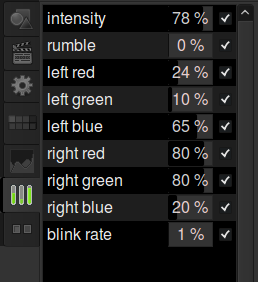Luz is a promising, surprisingly-powerful tool with a clean UI that lets you connect a huge range of inputs and generate visuals. It’s fully free and open source on Linux – possibly reason to try a Linux dual-boot for experimentation, even if you’re not a regular user. And now, a new release adds DMX support.
Working with actors and dynamic parameters, it looks extraordinarily easy to create quick visual effects. And it’s especially nice to see a tool that focuses on generative modules rather than emphasizing video.
For input, connect MIDI (notes and controls), gamepads, joysticks, Wii remotes, Wacom tablets, or any OpenSoundControl input, or set up Luz to react to audio signal (via adjustable spectrum). For output, you can produce simple geometries, images, GIFs, type, paint, and effects. For abstract work, it looks really stellar (and even gives me some ideas for how to reconfigure some of my Processing sketches).
DMX is a major new addition. Using those same inputs, you can now output DMX control to lighting and other gear. The same elegant approach to parameters applies to DMX, too, as in this screenshot from the blog post on DMX (linked below):

There really aren’t a whole lot of choices with this range of features for money, let alone one that’s free without any coding. The project encourages donations, including at the absurdly-cheap rate of a dollar a month.
Hold my calls, clear my schedule, so I can go play with this?
Here’s a rough example of playing with using the projector together with DMX lighting:
More on the DMX addition:
Luz gets DMX lighting control [GNOME Coder]
And tutorials and more on the official project page:
http://lighttroupe.com/luz/
Thanks to Ian from GNOME Coder for the tip!